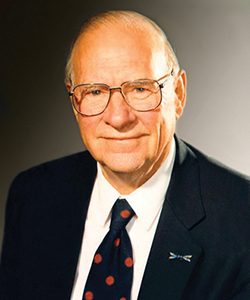Edward Slater facts for kids
Quick facts for kids
Edward Slater
FRS FAA
|
|
|---|---|

photo by Piet Borst
|
|
| Born | 16 January 1917 Melbourne, Australia
|
| Died | 26 March 2016 (aged 99) Painswick, UK
|
| Alma mater |
|
| Awards |
|
| Scientific career | |
| Fields |
|
| Institutions | |
| Doctoral advisor | David Keilin |
| Notable students | Piet Borst |
Edward Charles Slater (born January 16, 1917 – died March 26, 2016) was an important Australian scientist. People often called him Bill Slater. He was a biochemist, which means he studied the chemistry of living things. He spent most of his working life at the University of Amsterdam in the Netherlands.
Early Life and Learning
Edward Slater grew up in Australia. He studied biochemistry at the University of Melbourne. In 1946, he moved to Cambridge in England. There, he earned his PhD degree. His teacher and mentor was a famous scientist named David Keilin.
His Work and Career
In 1955, Bill Slater started working at the medical school of the University of Amsterdam. He stayed there until he retired in 1985. He is known for helping to make biochemistry in the Netherlands very strong.
Slater also managed a science magazine called Biochimica et Biophysica Acta. He made it one of the most important publications in the field of biochemistry. He even wrote a book about the magazine's history in 1986.
From 1988 to 1991, he was the president of a big international group called the International Union of Biochemistry and Molecular Biology. This group helps scientists who study biochemistry all over the world.
Amazing Discoveries
Slater made many important discoveries in biochemistry. He helped us understand how our bodies get energy. This process happens in tiny parts of our cells called mitochondria.
He studied something called the respiratory chain. This is like a tiny power plant inside our cells. It helps turn food into energy. Slater found out more about the different parts of this chain. These parts include things like cytochrome b and iron–sulfur proteins.
He also showed how certain medicines or chemicals can affect how our cells make energy. For example, he studied how antimycin stops energy production. He also looked at oligomycin and aurovertin, which affect how energy is stored.
His work helped us understand how these chemicals work together. It showed how they can change the way our cells' energy factories behave.
Awards and Special Honours
Edward Slater received many awards for his important work.
- In 1964, he became a member of the Royal Netherlands Academy of Arts and Sciences.
- In 1975, he was chosen as a Fellow of the Royal Society (FRS) in the UK. This is a very high honour for a scientist.
- In 1984, he was made a Knight in the Order of the Netherlands Lion. This is a special award from the Dutch government.
- In 1985, he became a member of the Australian Academy of Science.
He also received special honorary degrees from two universities:
- The University of Southampton in 1993.
- The University of Bari in 1998.

